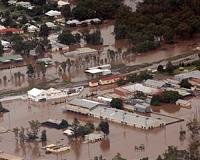| . |  |
. |
Washington DC (SPX) Jan 10, 2011 A study that relates global energy use to economic growth, published in the January issue of BioScience, finds strong correlations between these two measures both among countries and within countries over time. The research leads the study's authors to infer that energy use limits economic activity directly. They conclude that an "enormous" increase in energy supply will be required to meet the demands of projected world population growth and lift the developing world out of poverty without jeopardizing standards of living in most developed countries. The study, which used a macroecological approach, was based on data from the International Energy Agency and the World Resources Institute. It was conducted by a team of ecologists led by James H. Brown of the University of New Mexico. The team found the same sort of relationship between energy consumption per person and gross domestic product per person as is found between metabolism and body weight in animals. Brown's group suggests the similarity is real: cities and countries, like animals, have metabolisms that must burn fuel to sustain themselves and grow. This analogy, together with the data and theory, persuades the BioScience authors that the linkage between energy use and economic activity is causal, although other factors must also be in play to explain the variability in the data. The study goes on to show that variables relating to standard of living, such as the proportion of doctors in a population, the number of televisions per person, and infant mortality rate, are also correlated with both energy consumption per person and gross domestic product per person. These correlations lead the authors to their conclusions about the increases in energy production necessary to sustain a still-growing world population without drops in living standards. To support the expected world population in 2050 in the current US lifestyle would require 16 times the current global energy use, for example. Noting that 85 percent of humankind's energy now comes from fossil fuels, the BioScience authors point out that efforts to develop alternative energy sources face economic problems of diminishing returns, and reject the view of many economists that technological innovation can circumvent resource shortages.
Share This Article With Planet Earth
Related Links American Institute of Biological Sciences The Economy
 Floods set to clip Australian growth
Floods set to clip Australian growthSydney (AFP) Jan 9, 2011 Massive floods sweeping through northeastern Australia will temporarily slow growth in the resources-driven economy, but will not derail the "Wonder from Down Under", analysts say. As the only advanced economy to avoid recession triggered by the global financial crisis, Australia was riding high on annual growth of 2.7 percent driven by mining exports to Asia before the "biblical" floods hit ... read more |
|
| The content herein, unless otherwise known to be public domain, are Copyright 1995-2010 - SpaceDaily. AFP and UPI Wire Stories are copyright Agence France-Presse and United Press International. ESA Portal Reports are copyright European Space Agency. All NASA sourced material is public domain. Additional copyrights may apply in whole or part to other bona fide parties. Advertising does not imply endorsement,agreement or approval of any opinions, statements or information provided by SpaceDaily on any Web page published or hosted by SpaceDaily. Privacy Statement |